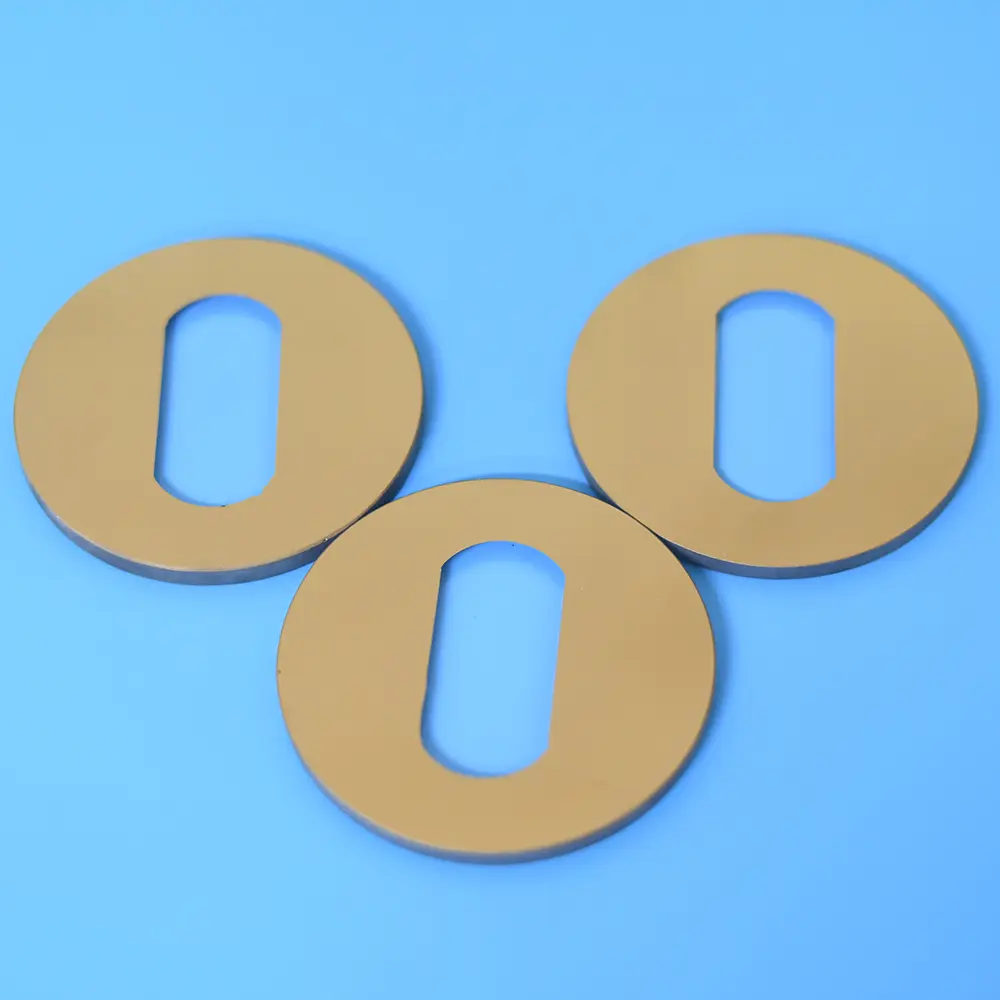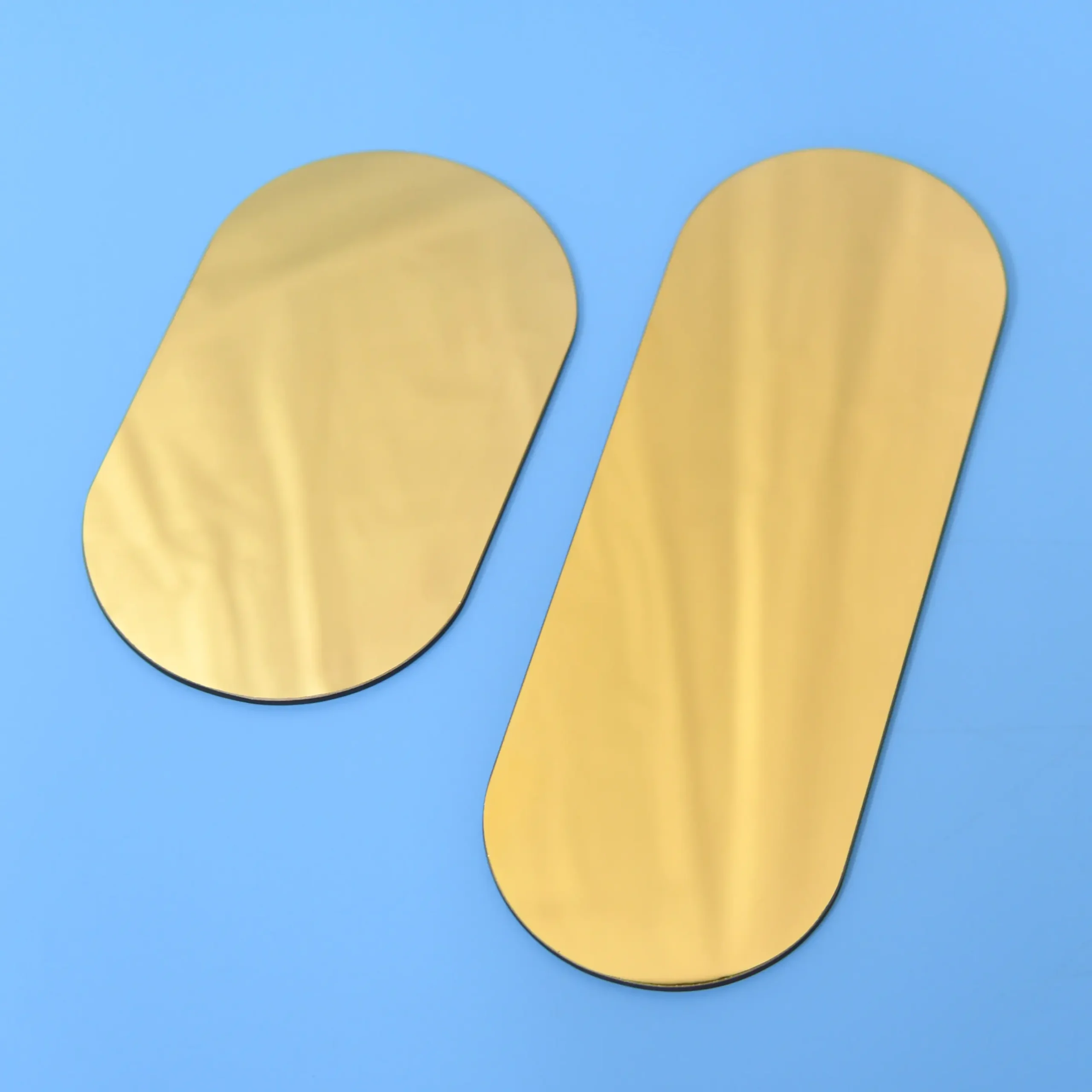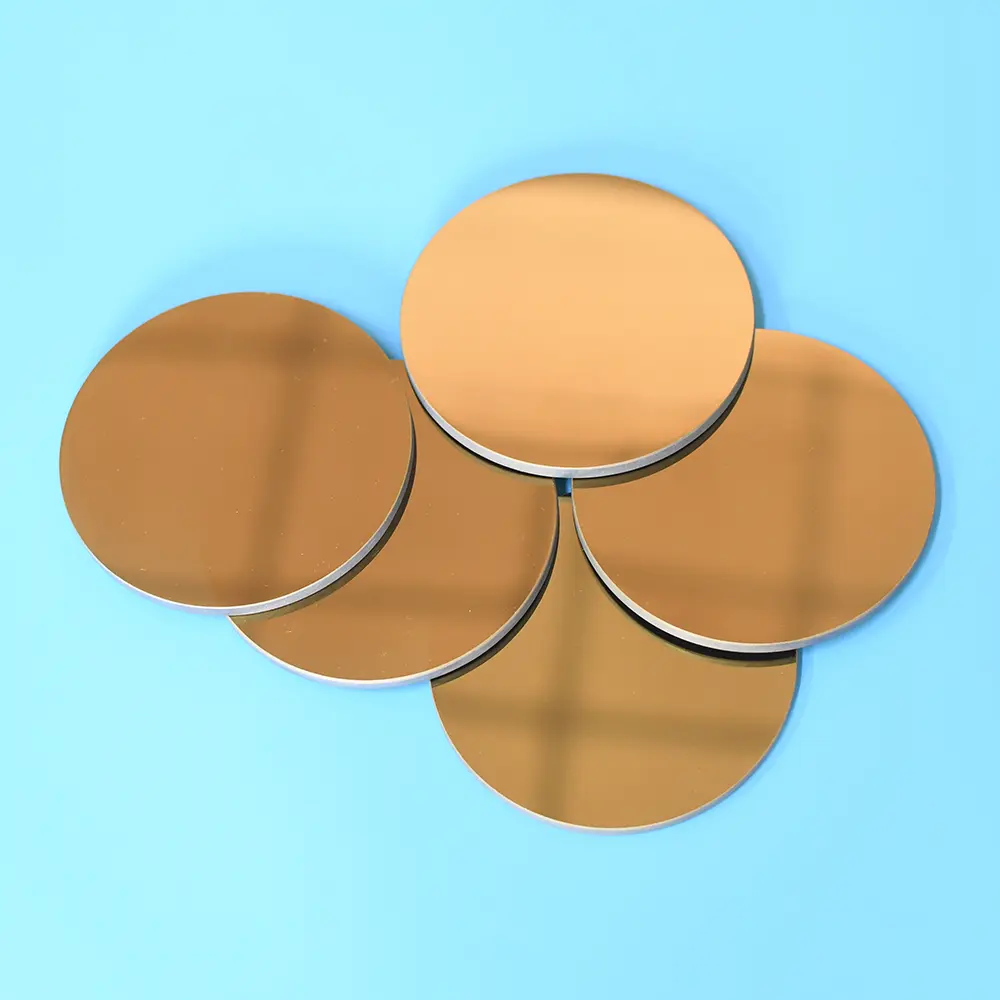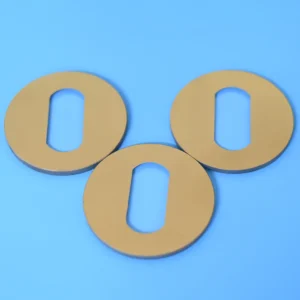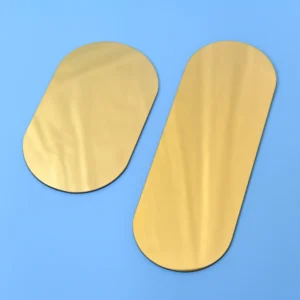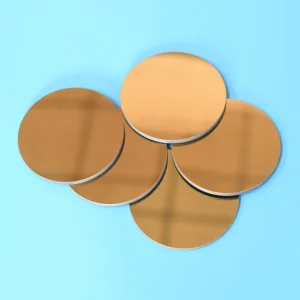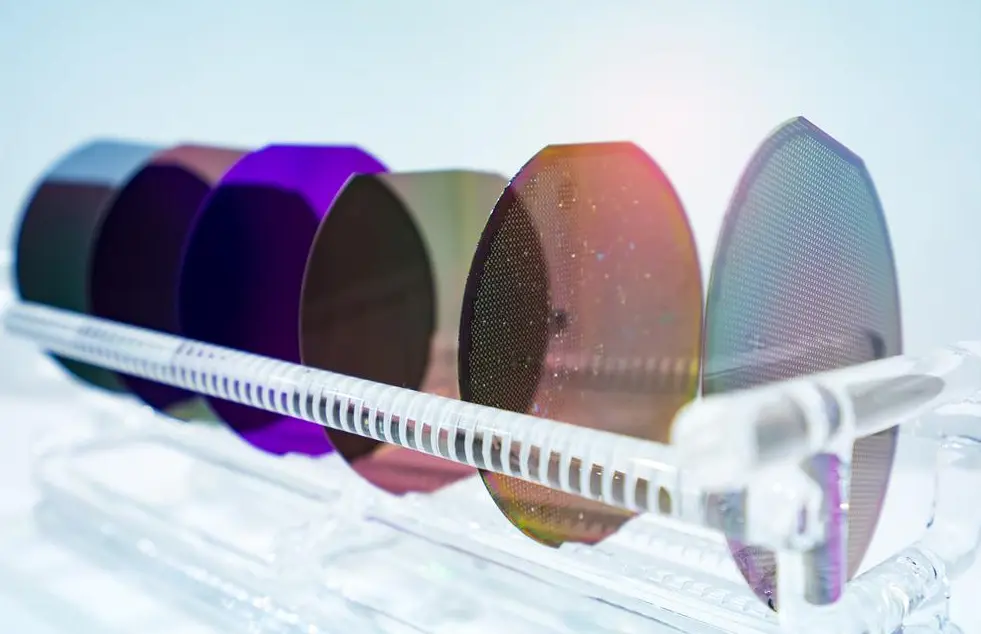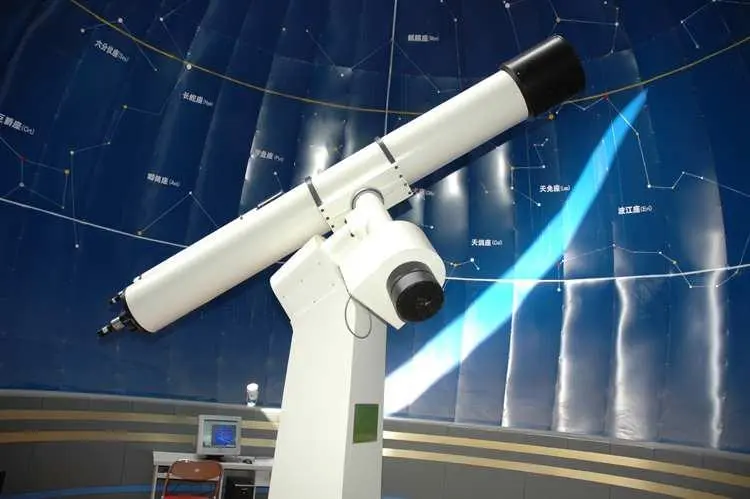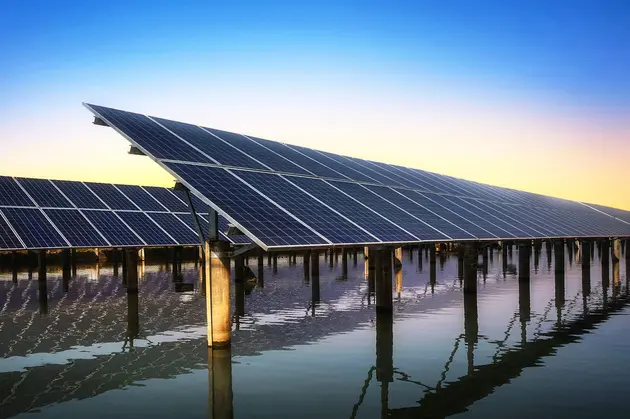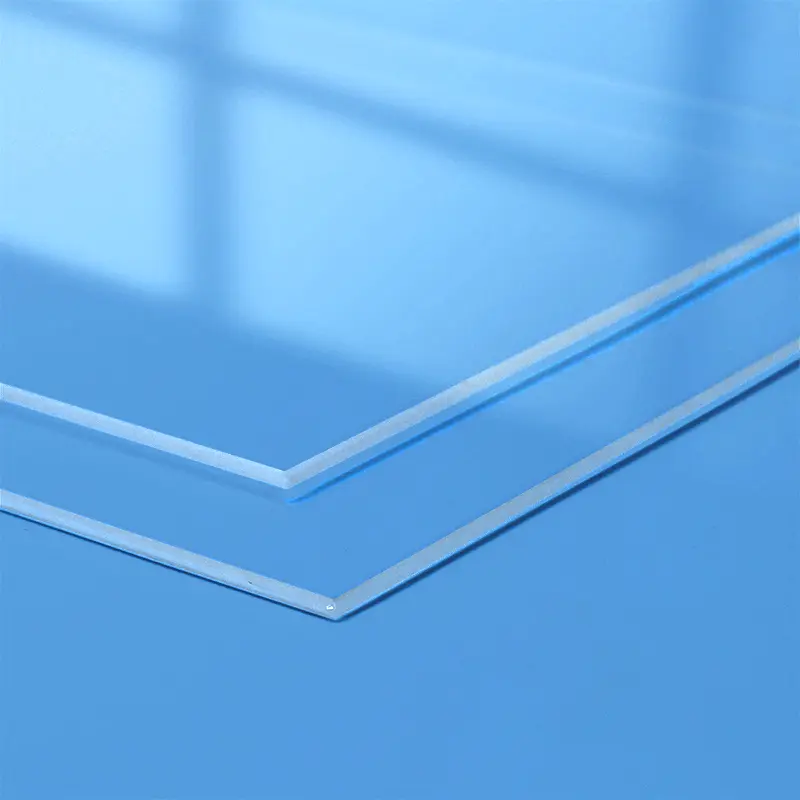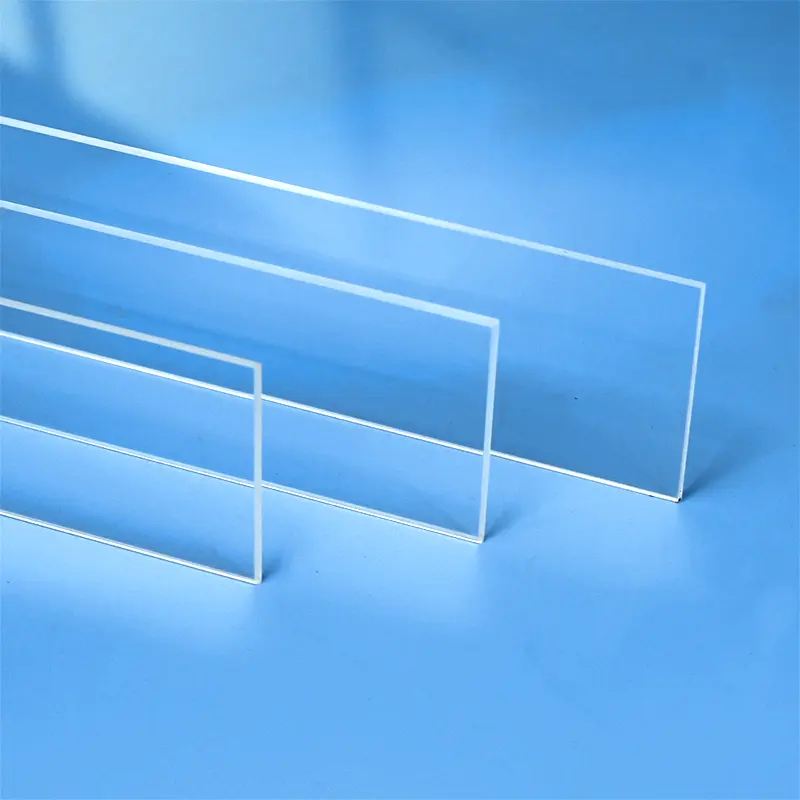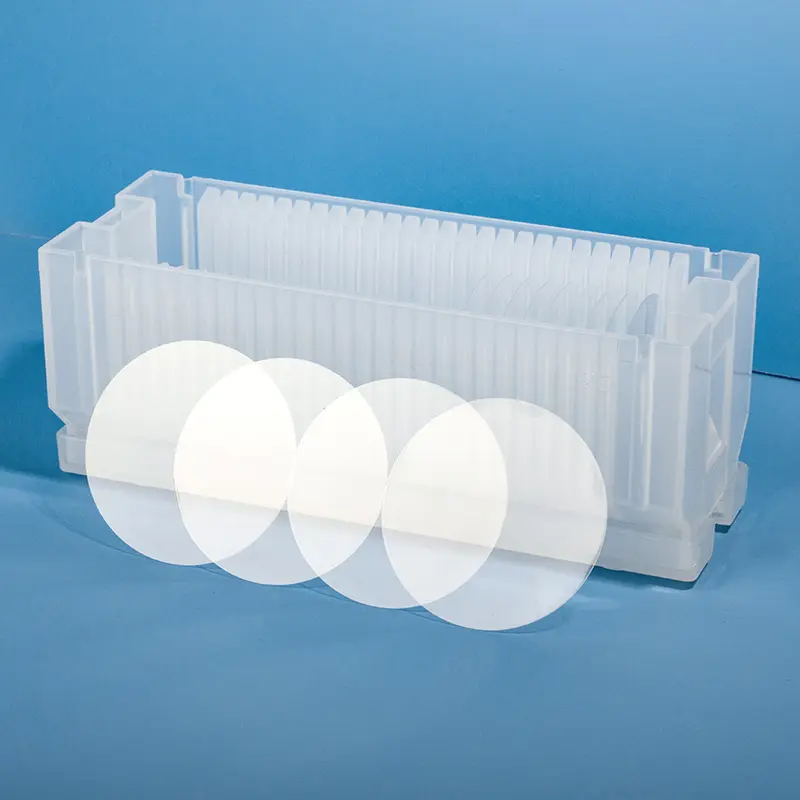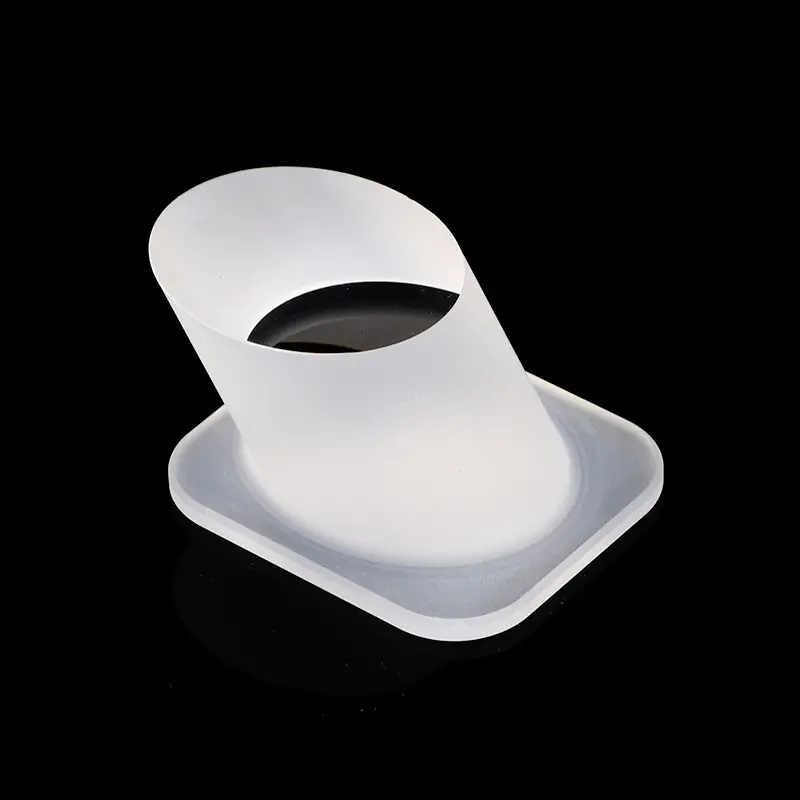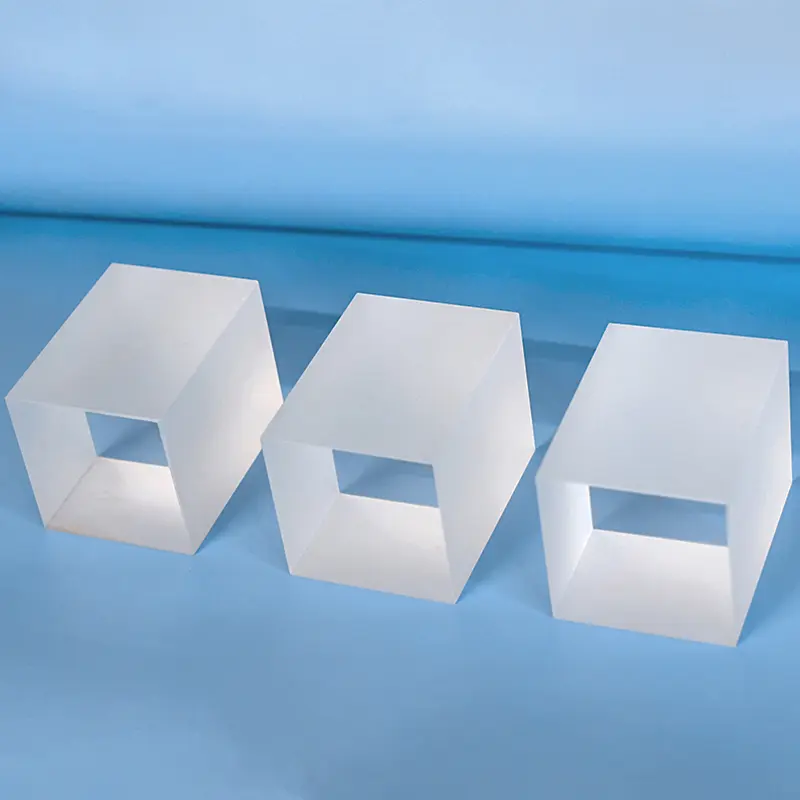Our custom-shaped gold-coated quartz plates, like the featured circular pieces with an oblong internal cut-out, are precision-engineered from high-purity fused silica. The advanced gold metallization process provides exceptional high reflectivity (especially in IR), electrical conductivity, and chemical inertness. These bespoke components are ideal for demanding applications requiring specific optical, electrical, or protective properties in industries such as optics, sensors, microelectronics, and scientific instrumentation.
| Property Content | Property Values |
|---|---|
| SiO2 | 99.99% |
| Density | 2.2×10³ kg/cm³ |
| Hardness | 5.5 - 6.5 Mohs' Scale 570 KHN 100 |
| Tensile Strength | 4.8×10⁷ Pa (N/mm2) (7000 psi) |
| Compression Strength | >1.1×10⁹ Pa (160,000 psi) |
| Coefficient of Thermal Expansion | 5.5×10⁻⁷ cm/cm·°C (20°C-320°C) |
| Thermal Conductivity | 1.4 W/m·°C |
| Specific Heat | 670 J/kg·°C |
| Softening Point | 1730°C (3146°F) |
| Annealing Point | 1210°C (2210°F) |
| Strain Point | 1120°C (2048°F) |
| Work Temperature | 1200°C (2192°F) |
| Electrical Resistivity | 7×10⁷ ohm cm (350°C) |
| Size | Customized |
| Logo | Customized Logo Accept |
High Transparency
Quartz glass itself possesses extremely high transparency, and the gold coating process does not affect its optical transmission, ensuring clarity in optical applications.
High-Temperature Resistance
The quartz material can withstand continuous use temperatures of up to 1100°C, making it suitable for high-temperature environments.
Gold Coating Enhancement
The gold layer coating enhances the reflectivity of the quartz glass, particularly in the infrared and visible light ranges, while also providing good electrical conductivity.
Shape Versatility
Quartz custom gold-coated plates can be fabricated into various shapes to meet specific application requirements, such as circular, square, or other complex shapes.
Application Scenario
Semiconductor Manufacturing
In semiconductor processes, quartz custom gold-coated plates are used as various components, such as furnace tubes and glass boats, which require direct or indirect contact with silicon wafers in high-temperature environments. The high-temperature resistance and thermal stability of quartz materials are essential in these applications.
Optical Lens Manufacturing
In the optical field, quartz custom gold-coated plates are used to reduce reflection and enhance light transmission by coating a layer of quartz film onto the glass surface, thereby improving the performance of optical equipment. This is widely utilized in the manufacturing of optical instruments such as camera lenses, telescopes, and microscopes.
The gold coating on quartz custom gold-coated plates primarily serves two purposes: first, to enhance their optical performance within specific wavelength ranges, such as reflectivity and transmission; and second, to provide good electrical conductivity, which is crucial in electronic and optoelectronic applications.
In semiconductor manufacturing, quartz custom gold-coated plates can be used to fabricate components such as furnace tubes and glass boats, which require direct or indirect contact with silicon wafers in high-temperature environments. The high-temperature resistance and thermal stability of quartz are critical for these applications.
The custom shape of quartz custom gold-coated plates allows them to be adapted to various industrial and scientific applications. For example, specific shapes can be used in the design of particular optical instruments, semiconductor manufacturing equipment, or solar panels to ensure optimal performance and compatibility.
Frequently asked questions
We specialize in the end-to-end manufacturing of high-purity quartz glass components. Our core product lines include:
Quartz Tubing & Rods: A wide range of diameters and specifications.
Quartz Plates & Discs: Precision-cut and polished for optical and industrial use.
Quartz Labware: A full suite of standard and custom glassware, including beakers, flasks, and boats.
Semiconductor-Grade Quartz: High-purity components like process tubes and carriers for semiconductor fabrication.
Custom Fabricated Components: We can produce complex parts tailored to your unique designs and specifications.
Yes. Custom fabrication is at the core of our business. With over a decade of specialized experience, we partner with companies to provide expert OEM/ODM services. Our capabilities include welding, grinding, drilling, polishing, bending, and other precision processing techniques to create components that meet your exact requirements.
Quality is paramount in our manufacturing process. We are an ISO 9001:2015 certified manufacturer, ensuring that our processes meet international quality management standards.Our products also undergo rigorous SGS testing for purity and performance. We use high-purity raw materials (up to 99.998% SiO2) to produce fused quartz and fused silica products with exceptional thermal stability, high-temperature resistance, and chemical inertness.
We've streamlined our process to be as efficient as possible:
Submit Your RFQ: Send us your technical drawings, specifications, and requirements via our website contact form or email.
Rapid Response: You can expect an initial response within minutes and detailed communication within half an hour.
Design & Proposal: We will deliver a detailed design proposal and a competitive quote within 24 hours.
Prototyping & Production: Upon approval, we move swiftly from prototyping to full-scale production to meet your deadlines.
Partnering with Aoxin Quartz offers several key advantages:
Proven Expertise: With 10+ years in the industry, we have the technical knowledge to tackle complex challenges.
One-Stop Solution: We manage the entire production process, from sourcing high-purity raw materials to fabricating and finishing complex components.
Competitive Value: Located in a major quartz production hub, we leverage an efficient supply chain and advanced manufacturing to offer exceptional quality at a competitive price point.
Dedicated Partnership: Over 90% of our clients become long-term partners. We are committed to your success through responsive service, reliable quality, and innovative solutions.

